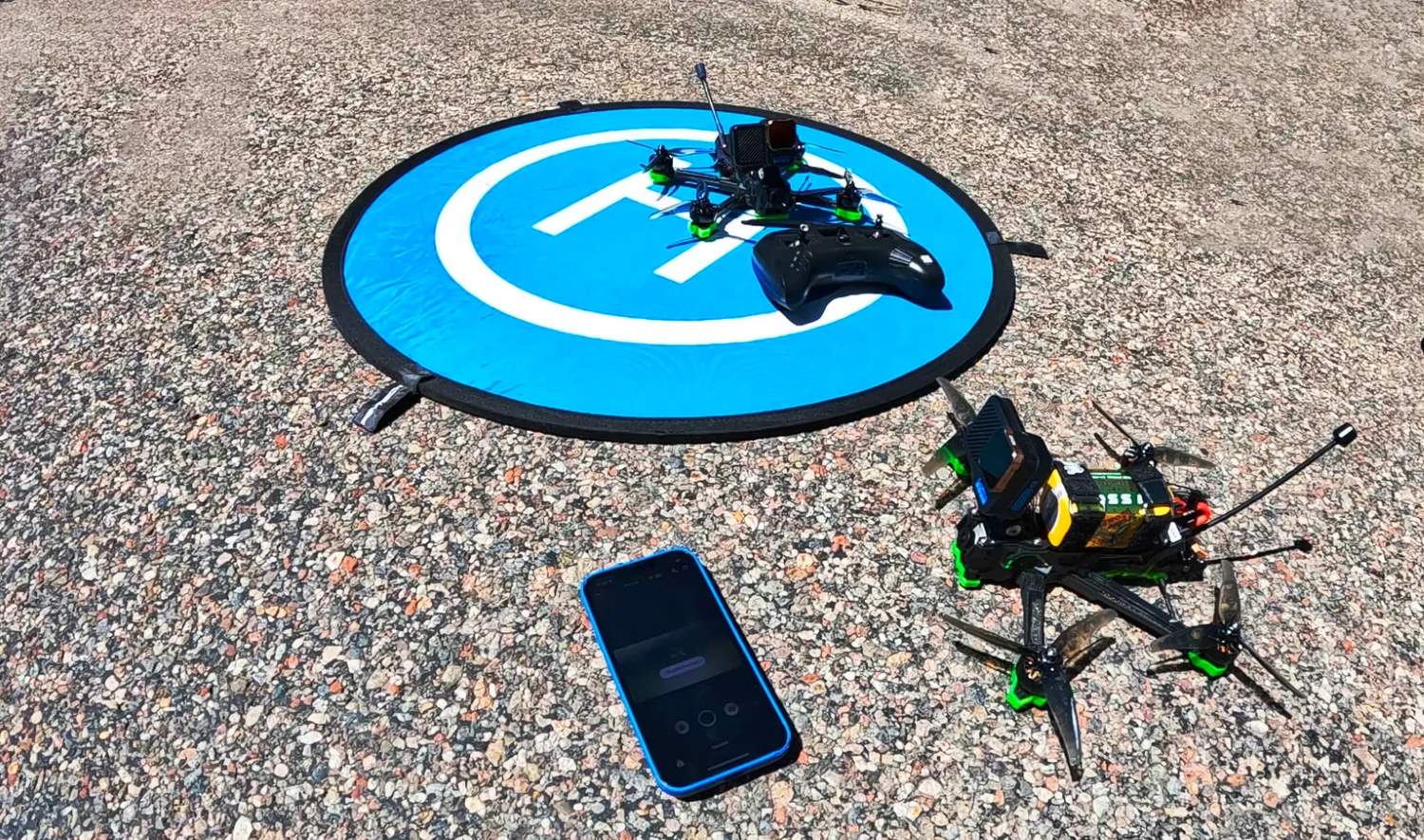From Peak Performance to Pitfalls: The GoPro Odyssey
When discussing a company that was once among the fastest growing, it’s impossible not to mention GoPro and its revolutionary action cameras.
Founded by Nick Woodman, GoPro redefined action photography and videography, capturing the imagination of adventure enthusiasts worldwide.
Since its IPO, there were signs of inefficiency. And losses began to accrue. Before delving into that, let’s take a closer look at how Woodman found GoPro.
Turning Passion into a Career: Nick Woodman’s Inspirational Journey
In the late 1990s, right after college, Woodman started his entrepreneurial journey with EmpowerAll.com, an electronics retail site that didn’t take off. Undeterred, he then tried FunBug, an online gaming service that got a lot of funding during the dot-com boom but struggled when the bubble burst, leaving investors and Woodman disappointed.
“Fun Bug was hugely traumatic, not because I’d failed, but because people believed in me and I let them down,” Woodman said.
To find inspiration, Woodman took a surfing trip to Australia, one of his favorite places. It was there that the idea for GoPro started to take shape. He was annoyed by the lack of good ways to capture surfing moments.
So, he came up with a camera that could be worn on the wrist and handle tough conditions. This wasn’t just about making a camera, but letting people take amazing photos and videos on their own – so he named it GoPro.
“I knew it might be the only trip like this I ever got to take. So, in preparing for the trip, I started playing around with this concept I had for a wrist camera that would allow me to shoot photographs of my friends while we were surfing,” he said.
“One thing led to another, the prototype was awesome, and the light bulb went off before we even left: I realized, ‘Holy smokes, I think I just had an idea for my next business’ – so the trip turned into an R&D mission to develop the idea. It was the first surf trip that I have ever been excited to come home from,” The CEO added.
When he got back home, Woodman threw himself completely into making his vision a reality. Living with his parents, he worked tirelessly on the first GoPro prototype, often putting in 20-hour days. He was motivated by the fear of failing again.
The Rise of GoPro – Once Took Over the Market

To fund GoPro in the beginning, he used his own savings and borrowed money from family, steering clear of outside investors because of his earlier setbacks.
The first GoPro camera began as a modified 35mm model, a simple start that set the stage for future innovations. Despite early challenges, like limited video capabilities, Woodman persevered. He pitched GoPro to surf shops, attended trade shows, and even appeared on QVC to promote it.
“GoPro is about capturing photos and images of people doing what they love to do – I want that, too,” he said.
In 2004, he sold the first GoPros and closed out the year with $150,000 in revenues. The following year, after starting sales on the QVC shopping channel, revenues increased to $350,000.
“It was very humble beginnings for GoPro, but I think it’s the right kind of beginning,” said Woodman.
The breakthrough came when REI and later Best Buy agreed to sell GoPro cameras, giving them crucial visibility and sales outlets.
From those, GoPro grew steadily, rolling out digital cameras that transformed action photography and videography. Each new version is built on the last, making GoPro popular not just for surfing but for all kinds of action sports and adventures.
In 2012, at age 37, Woodman sold 8.88% of his company for $200 million. This moves valued GoPro at $2.25 billion and officially made Woodman a billionaire. GoPro rapidly emerged as one of the fastest-growing companies, achieving sales exceeding a billion dollars by 2014.
Following its rapid sales growth, GoPro reached a peak in sales around 2015. However, during this period, the company faced challenges. Profits began to decline. Shortly thereafter, these declining profits transitioned into losses.
The Issues of GoPro
Everything started becoming much more inefficient once IPO happened. Founder Nick Woodman expressed concerns as GoPro underwent a major transformation after its IPO. The influx of capital and increased market confidence seemed to lead to a change in corporate culture, leaning towards extravagance and inefficiency.
Woodman himself acknowledged this shift, regretting how the company moved from being lean and innovative to becoming less efficient and more bloated.
Within eighteen months of its IPO, GoPro rapidly expanded its workforce to 1,600 employees. However, this growth was quickly followed by multiple rounds of layoffs. The company’s swift increase in size may have outpaced its operational requirements.
GoPro’s Struggle: Media Company Ambition
From the start, GoPro used its powerful brand and user-generated content to expand into a larger media platform, like giants like Netflix and YouTube. There was a belief that media companies were valued more highly in the stock market than hardware-focused firms.
In their IPO paperwork, GoPro talked about wanting to do more than just make cameras. They wanted to become a bigger deal in media by capturing exciting moments with their cameras, making their own content, and starting their own media platform.
Seeing the potential in media ventures, they invested heavily by hiring over a hundred people and forming a new software team. Their aim was to create original series and build a platform to rival industry giants.
However, this shift proved disastrous. Production costs shot up dramatically, going from $10,000 per episode to over $100,000. Despite pouring in these funds, several planned series never materialized, and their hoped-for media platform never got off the ground.
The fallout was severe. At first, investors were excited about GoPro’s innovative products and growth potential. However, they became disappointed as losses kept increasing. The stock price dropped sharply, prompting GoPro to undergo several rounds of layoffs and restructuring in a bid to cut costs and restore financial health.
GoPro’s attempt to become more than just a camera company shows how hard it can be to branch out and grow in new directions beyond what they’re already good at.
Nick Woodman’s Lavish Lifestyle

In addition, after GoPro went public, Nick Woodman began living large. In 2014, he became the highest-paid CEO in the US and was valued at over $3 billion. With his newfound wealth, Nick Woodman enjoyed luxuries such as a private jet, a 180-foot yacht, multiple homes, and vintage cars.
Nick Woodman’s lavish personal lifestyle seemed to impact GoPro’s corporate culture. Reports surfaced of excessive spending on marketing and operational costs within the company, reflecting Woodman’s own penchant for luxury. Within just 18 months, GoPro more than doubled its workforce from 700 to over 1800 employees.
But spending a lot of money didn’t help GoPro grow steadily. Even though their products were popular, and they had some early successes, the company faced money problems and found it hard to make a profit.
During this time, GoPro faced declining stock prices, increasing losses, and had to implement layoffs and restructuring efforts.
GoPro’s Core Products Under Strain
As GoPro focused on creating new products like entertainment projects, their main products started to struggle. The market was changing fast, with smartphone cameras and cheaper options from Chinese companies becoming serious competition for GoPro’s action cameras.
An example of GoPro losing focus on their main products was the GoPro Hero4 Session. Initially priced at $399 as a smaller version of their top Hero4 camera, it was supposed to be an entry-level option at $199.
As GoPro’s senior vice president said, “We thought we could just throw the thing out the door and charge $399, they’ll buy it because it’s GoPro.”
However, GoPro overestimated their brand’s appeal and didn’t market it enough. Sales fell short, so they had to cut the price by $200 just a few months later.
The financial problems were big. In late 2015, GoPro had its first loss in a quarter since going public, which was a bad sign that kept going into 2016. Their GoPro Hero5, promoted as their first waterproof camera without needing a case, had issues. The design problems made parts of the camera break under water pressure, hurting their reputation and causing more money issues.
At the same time, GoPro entered the drone market with the GoPro Karma.
So how is the Karma more than just a drone? It’s composed of several parts beyond the flying unit itself. At the front, there’s a detachable three-axis gimbal system known as the Karma Stabilizer, which can be easily removed by twisting and pulling it out.
When a Hero5 or Hero4 camera is attached to the harness and connected through the Mini USB or USB Type-C port, the Stabilizer keeps the camera steady, as observed during use. Its front-mounted position helps the camera record wide-angle video without the propellers appearing in the frame.
Intended to compete with DJI, a leading drone maker, the Karma encountered numerous problems right from the start.
Originally planned as a partnership that didn’t materialize, GoPro had to independently develop the drone, costing a staggering $96 million. Despite its launch, there were immediate reports of serious hardware issues, such as batteries coming loose during flights, causing drones to crash.
GoPro’s Insufficient Operations
Besides, GoPro has faced operational inefficiencies that have hindered its performance and growth.
GoPro’s operational struggles have been particularly evident in product development. The company has faced many issues with the launch of new products, such as the Karma drone, as mentioned above.
Karma issues led to a complete recall of all 2,500 units sold, severely harming GoPro’s reputation and finances in the growing drone industry.
“Shipments of Karma would resume as soon as the issue is resolved,” commented GoPro.
The issue extended beyond just battery malfunctions, GoPro struggled to match DJI’s competitive pricing and missed seizing an initial market lead. This was a big moment for GoPro. It showed that their different departments were working separately and not very well together. They weren’t coordinated or efficient across the whole company.
Moreover, financial management has been another weak spot for GoPro. The company has experienced financial fluctuations, including substantial losses. For instance, GoPro reported a net loss of $373 million in 2016.
High production costs, coupled with pricing pressures and declining average selling prices, have strained GoPro’s financial resources. This has limited the company’s ability to invest in new technology and marketing initiatives necessary for long-term growth.
Another challenging aspect of managing a hardware company like GoPro Inc. is determining the optimal inventory levels. The difficulty arises from the need to balance production with fluctuating consumer demand, which peaks around new product launches and during the holiday season.
GoPro ended up with too much inventory because they guessed demand incorrectly. They had to sell the extra products at lower prices, which hurt their profits and caused their stock to drop by 90%.Top of FormBottom of Form
GoPro’s Narrow Market Focus and Challenges in a Competitive Landscape
Besides, GoPro has a challenge because it focuses mainly on a narrow market. Their cameras are excellent for action sports, a niche they started and still lead in. However, outside of this specific use, GoPro’s relevance decreases. The popularity of smartphones, especially since GoPro was around before the iPhone, has been a big obstacle.
Instead of working with smartphones from the beginning, GoPro competed against them. Nick Woodman admitted this was a mistake during the company’s tough times in 2016.
Today, GoPro is mostly recognized for its action cameras, which is a valuable market but has constraints on growth. The company’s high valuation of $11 billion raises doubts about its ability to expand beyond this niche. Investors are uncertain about GoPro’s prospects to innovate beyond its main product line.

Even within the action camera market, GoPro faces rising competition from cheaper alternatives that have weakened its previous strong position.
While GoPro’s sales have fluctuated, they have not returned to their previous highs. Without innovation or shifts, achieving those peaks again seems unlikely in the near term. A challenge for GoPro: how to maintain relevance and profitability in a market where competition is fierce and diversification is limited.
Transforming GoPro: A New Business Model Emerges
Recognizing the need for change, Woodman took decisive action. This included laying off 500 employees and shutting down the entertainment division, refocusing GoPro on its core business of action cameras and accessories. By returning to the basics that drove GoPro’s initial success, the company aimed for steady growth instead of venturing into new, unfamiliar areas.
To adapt to market changes and boost revenue, GoPro launched GoPro Plus in 2018. This subscription model offers customers savings on camera purchases through their website.
GoPro offers customers two purchasing options for their cameras: buying in-store for $550 or purchasing online directly from GoPro for $350. This price difference of $200 incentivizes consumers to opt for the online purchase, where they not only save money but also receive a subscription to GoPro Plus bundled with their camera.
The GoPro Plus subscription, included in the $350 price tag, offers compelling benefits such as unlimited cloud storage for videos and photos, no-questions-asked camera replacement in case of damage, and access to GoPro’s mobile app.
This approach not only encourages direct sales but also creates ongoing revenue through subscription fees, reducing the impact of seasonal fluctuations in product sales.
GoPro’s subscription model has proven successful, with subscription revenue now exceeding $100 million annually and boasting high gross margins of 70-80%.
However, challenges persist. Issues such as camera overheating problems and fluctuating manufacturing costs due to inflation and currency fluctuations have impacted product quality and profitability.
The appreciation of the US dollar against foreign currencies has further complicated pricing strategies in international markets, potentially affecting GoPro’s global competitiveness.
In 2021, GoPro achieved a significant milestone by recording its first year of profitability after five years of losses. They reported a net profit of $371 million, signaling a successful pivot towards stability and profitability.
However, the following year, in 2022, net profits dropped to $29 million, highlighting ongoing challenges and external factors impacting their financial performance.









